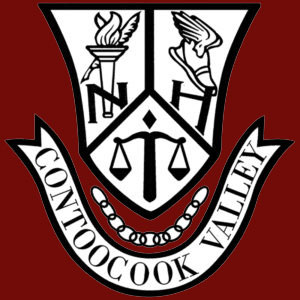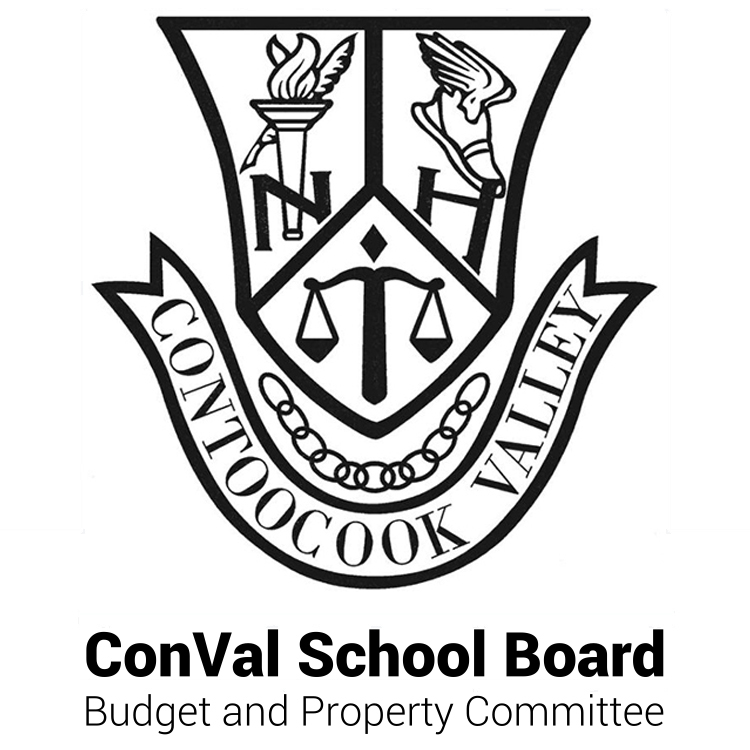by ConVal School Board Member Jim Fredrickson
November 18, 2020
The COVID-19 emergency that started this past March has demanded that we all make significant adjustments in our lives in order to protect ourselves, our families and our neighbors. Last spring, with a few months left in the 2019-20 school year, we shifted to a remote learning model and this fall we started the school year following a hybrid learning model which includes both in-person and remote lessons.
We are now several months into the 2020-21 school year and are thoroughly impressed by the way students, staff and the community have adapted to the learning model we are following. The ConVal School Board and the Administration are committed to keeping everyone safe and we can assure you that this mission and philosophy has been paramount in any decision we’ve made over the past six months, and will continue to remain our top priority going forward.
This article is intended to provide a brief summary of the financial impacts of the pandemic on the recently completed (2019-20), the current (2020-21), and our next (2021-22) school years.
The financial situation is probably best described as fluid as our cost estimates change and, perhaps more significantly, as our federal and state authorities define the various relief packages that will offset some of the unanticipated costs.
These estimates are updated and reported on during our regular Board meetings.
2019-20 School Year
We were well into the fiscal year (July 1 – June 30) when Governor Sununu declared a state of emergency on March 13, just days after District voters approved our 2020-21 budget. ConVal started remote learning on the 18th and the effort to understand and quantify the financial impact began in earnest.
Closing the schools and moving to a remote model did not result in net savings. There were some savings associated with the shift (e.g. transportation and fuel, facility operations, special education services, supplies, furniture & equipment, etc.), but these costs were offset by others (e.g. technology).
Our auditor’s field work for the FY2019-20 school year was recently completed and our “MS-25 School Financial Report” was signed by the Superintendent and all Board members and submitted to NH Department of Revenue.
The key “take-aways” from this report include:
- Total annual expenditures were under the appropriated amount (as required by law)
- $1,853,000 was “encumbered” (transferred to FY 20-21)
- $600,000 was reserved for the various District Trust Funds (as approved by voters in March)
- Approx. $570,000 remained in the “unassigned fund balance” (more on this a subsequent article)
From a school operation point of view, our teachers, staff, and administrators demonstrated their ability to adapt and to effectively implement a decidedly different method of learning.
2020-21 School Year
Unfortunately, our budget for this school year was approved by District voters literally days before we had to implement remote learning and, as such, there are significant unanticipated costs that have to be addressed. There are a lot of “moving parts” in this ongoing activity on both the cost and the revenue sides of the financial equation.
Unanticipated Costs
Here is a high-level description of some of these estimated unanticipated costs ($$ not included since these are subject to change and are reported on during School Board meetings):
- Additional staffing (e.g. teaching staff and nurses).
- Technology and communication equipment, such as Chromebooks and hot spots, for students and staff to use during remote learning.
- Daily cleaning and sanitizing of all school buildings. This will be done frequently throughout the school day, and each building will receive an extra deep cleaning each night.
- Safety equipment, such as personal protective equipment (PPE) for teachers and students
- Outdoor classrooms – the tents being used for outdoor instruction which allows for more physical distance between students and decreases the viral load.
- HVAC system upgrades to help improve the air quality and circulation in our schools.
The largest unanticipated cost was associated with certain prescribed special education services we were required to provide last year but could not because of the situation. It should be noted that the State granted schedule relief but did not waive the requirement to provide these services. These must be provided and paid for this school year – and they will be, using “encumbered” funds that were carried forward from last year.
State laws and regulations require that our costs cannot exceed the budget approved by voters each March. There are several ways that we are able to accommodate the unanticipated costs associated with COVID:
- $$ within the general fund can be moved (with Board approval) between line items
- Budgeted programs can be reduced, deferred or, as a last resort, eliminated
- The budget for the current school was effectively increased by encumbering (transferring) funds from FY19-20 to FY20-21 (the Board approved this in June)
- District Trust Funds can be utilized in lieu of the general fund for certain allowable expenses.
- Some COVID related expenses can be shifted out of the general fund and be covered by various federal or state programs that specifically address the cost of the pandemic.
We actually started last fiscal year by making several technology purchases in anticipation of the continuation of remote learning.
Revenues – Federal & State
Certain COVID-19-related expenses do or may qualify for reimbursement by the federal or state government. Unfortunately, the amount and timing of this revenue is somewhat unpredictable and some of the guidelines are fairly restrictive and/or lack full clarity.
- Federal funding was provided to the state under CARES (Coronavirus Aid, Relief, and Economic Security). The ESSER (Elementary and Secondary School Emergency Relief) Fund created under that law provides funds for expenses incurred relative to COVID-19 and remote learning dating back to March 13. Initial ConVal award: approx. $312,000
- FEMA recently reversed their position and determined that schools do not qualify (over $1 million was estimated for ConVal) since “the education of children is not an immediate action necessary to protect public health, life, and safety.”
- GOFERR (Governor’s Office for Emergency Relief and Recovery) funds were made available to towns earlier this year (and not to the District directly). A portion of these could conceivably (but not likely) have been made available by the towns to the District. We asked for any available assistance, but none was available from the towns – they had their own costs to cover.
- In mid-October, our Governor made an announcement regarding an additional $45M CARES award to schools at a rate of approximately $200 per pupil (NH DOE Supplemental Public School Response Fund). ConVal estimate: $399,500
Stay tuned for inevitable changes to the above.
2021-22 School Year
The Budget & Property Committee recently revised its FY21-22 Budget Guidance to the School Superintendent and made our current instructional model the baseline for next school year.
The school administration team is currently developing their recommendations and will present that to the School Board in early December. The Board will have until late January to revise, approve, and post our proposed budget (and default budget).
The budget will be available for review and amendment by the public is February. Voting by Ballot is scheduled for March 9, 2021.
Summary
We have all worked hard during the health crisis to ensure that the District meets all fiscal requirements and we will continue to do so with absolute focus on health and safety and with minimal impact on the quality of education we provide our students.
We encourage all interested community members to attend our School Board meetings to hear and participate in all discussions surrounding the ongoing response to the pandemic. All meeting information, such as agendas, times, and locations are posted online here. Thank you again for your interest, understanding, and cooperation.

